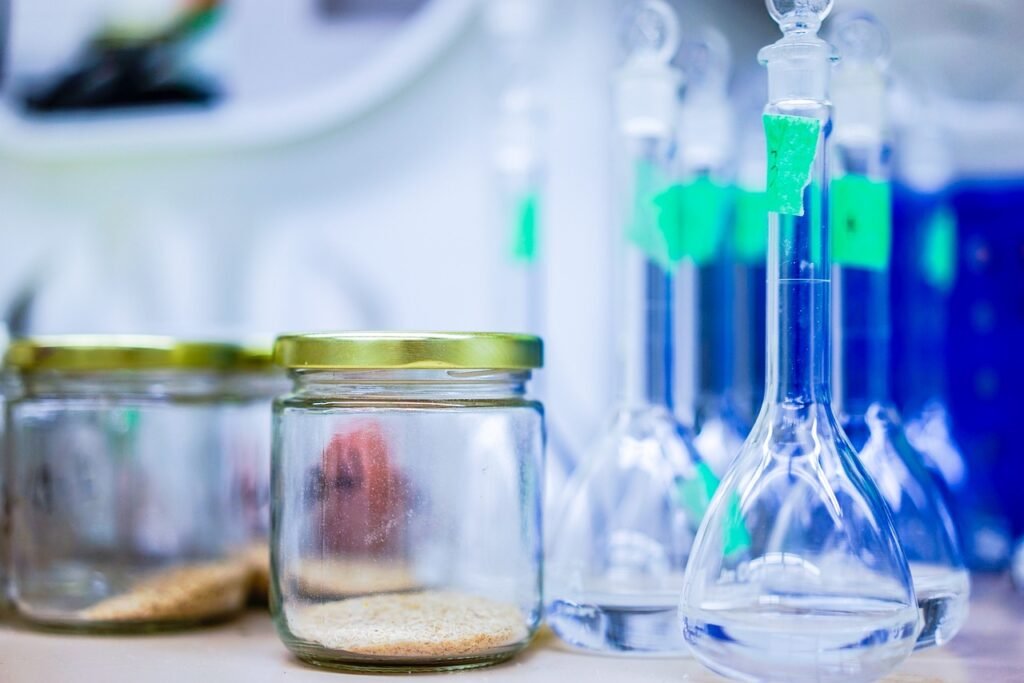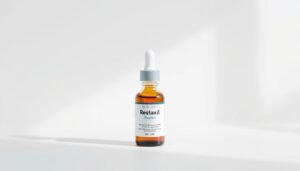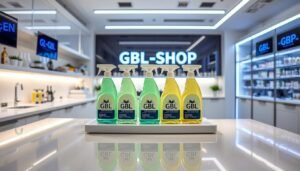
I. Introduction
Gamma-hydroxybutyrate (GHB) and gamma-butyrolactone (GBL) are two substances that have attracted a lot of attention in recent years due to their use, abuse and the severe consequences associated with them. These compounds are often misunderstood or misrepresented and have reputations ranging from therapeutic benefits to dangerous recreational use. Understanding the complexities of GHB and GBL is crucial not only for those who may come into contact with these substances, but also for society in general. This guide aims to provide a comprehensive insight into GHB and GBLby highlighting its risks, addictive potential and paths to recovery. What to buy Gbl or GHB, click below
II GHB and GBL: Understanding risks and consequences
Definition of GHB and GBL
GHB is a central nervous system depressant that was originally synthesized as an anesthetic. It occurs naturally in small amounts in the human brain, but is more commonly found in its synthetic form. GBL, on the other hand, is a precursor to GHB - it is converted to GHB in the body. While GHB is regulated as a Class I narcotic in many countries, GBL is often marketed as an industrial solvent, making it more accessible but just as dangerous.
How they are used and abused
Both GHB and GBL are abused due to their euphoric and sedative effects. They are usually taken orally, either diluted in a drink or in pure form. In certain circles, GHB is known as a 'club drug' as it is used in the party scene to enhance social interactions, reduce inhibitions or as a substitute for alcohol. However, the line between use and abuse is thin, and the margin for error is dangerously small.
Short-term and long-term effects of the use of GHB and GBL
The short-term effects of GHB and GBL include drowsiness, euphoria and nausea. At higher doses, these effects can lead to dizziness, confusion and respiratory depression, which can result in unconsciousness or even death. Long-term use has even more serious consequences: Chronic users can suffer from memory problems, impaired cognitive function and a range of physical health problems, including liver and kidney damage.
Consequences of addiction and abuse
Addiction to GHB and GBL can be both rapid and severe. Physically, addiction to these substances can lead to life-threatening withdrawal symptoms, including seizures and hallucinations. Legally, the consequences are just as serious, as the possession, distribution or manufacture of GHB is illegal in many countries. Socially, the abuse of these substances often leads to strained relationships, job loss and isolation.
III The dangers of GHB and GBL: What you need to know
Common myths and misconceptions about GHB and GBL
One of the most common myths about GHB and GBL is that they are safe in small amounts. This belief is dangerous because there is an extremely fine line between a "safe" dose and a lethal dose. Another misconception is that GHB is a harmless sleep aid or weight loss supplement, which is far from the truth. Both GHB and GBL are potent substances with significant risks.
The risks of using GHB and GBL
The main dangers associated with the use of GHB and GBL are overdose and addiction. Overdose can occur even at doses that users perceive as moderate, which can lead to respiratory arrest, coma or death. Addiction to these substances is particularly insidious, as physical dependence can develop quickly and withdrawal symptoms are notoriously severe.
The importance of recognizing the signs and symptoms of GHB and GBL use and abuse
Recognizing the signs of GHB and GBL abuse is crucial for early intervention. Symptoms may include unexplained drowsiness, confusion, loss of coordination and unusual behavior patterns. If you suspect someone is using GHB or GBL, it is important to act quickly as the risks of continued use are significant.
IV. GHB and GBL addiction: Signs, symptoms and treatment options
Signs and symptoms of GHB and GBL addiction
Addiction to GHB and GBL can manifest itself in different ways. Physically, users may experience withdrawal symptoms such as tremors, anxiety and sweating if they do not take the substance for a short period of time. Psychologically, they may develop an obsession with acquiring and consuming the drug, neglect responsibilities and engage in risky behavior to maintain their addiction.
Treatment options for GHB and GBL addiction
Treatment for GHB and GBL addiction usually begins with medically supervised detoxification, where professionals treat the dangerous withdrawal symptoms. After detox, therapy is essential to address the psychological aspects of the addiction. Cognitive behavioral therapy (CBT), individual counseling and self-help groups such as Narcotics Anonymous provide the necessary support on the road to recovery.
Importance of seeking professional help for addiction
Overcoming GHB and GBL addiction should not be attempted alone. The withdrawal process can be life-threatening and the psychological grip of these substances is strong. Professional help provides a structured environment, medical supervision and the tools needed for successful recovery.
V. Prevention of GHB and GBL abuse: strategies for a safe community
Strategies for the prevention of GHB and GBL abuse
Preventing the abuse of GHB and GBL requires a multifaceted approach. Education and awareness campaigns are crucial to inform the public about the dangers of these substances. Schools, community centers and workplaces can play a role in disseminating this information, especially to younger audiences who may be more susceptible to experimentation.
Importance of treating underlying problems that may contribute to addiction
Addiction is often a symptom of underlying issues such as mental illness, trauma or social isolation. Addressing these underlying issues through counseling, support networks and access to mental health services is key to preventing the misuse of GHB and GBL.
The role of community and social support in preventing abuse
A strong community can act as a deterrent to substance misuse. By creating a supportive, understanding and responsible environment, communities can reduce the appeal of substances such as GHB and GBL. Social support systems, including family, friends and peer groups, are critical to both preventing abuse and supporting those in recovery.
VI GHB and GBL use: facts, risks and consequences
Facts about GHB and GBL use
GHB and GBL are not used as frequently as some other substances, but their effects are significant. Studies show that GHB use is more common in certain demographics, particularly in the party scene and among people seeking alternative methods of intoxication. Despite its relatively low prevalence, the consequences of its use are disproportionately severe.
Risks associated with the use of GHB and GBL
The risks of consuming GHB and GBL go beyond the immediate effects. Users can suffer long-term health complications, including neurotoxicity and irreversible damage to vital organs. In addition, the social and legal consequences of using these substances can be life altering, leading to criminal records, job loss and alienation from loved ones.
Consequences of the use of GHB and GBL

The consequences of GHB and GBL use are far-reaching. Legal consequences can include prison sentences, heavy fines and a permanent criminal record. Socially, users may find themselves isolated from their peers, as they have to deal with the stigma of drug abuse.
VII GHB and GBL in a medical context: safe and effective use
Medical applications of GHB and GBL
Interestingly, GHB has legitimate medical applications. It is used to treat narcolepsy, a disorder characterized by excessive daytime sleepiness and sudden sleep attacks. In this context, it is marketed under the name sodium oxybate. GBL, on the other hand, is not used directly in medicine, but is a precursor in the synthesis of pharmaceuticals.
Safe and effective use of GHB and GBL in the medical field
In medical facilities, the use of GHB is strictly controlled. Patients are closely monitored to ensure that the correct dosage is administered and the risk of dependence or abuse is minimized. The effectiveness of GHB in the treatment of narcolepsy demonstrates its potential when used appropriately, but also highlights the importance of professional supervision.
Importance of proper training and monitoring in the medical field
The administration of GHB in medical facilities requires special training and strict supervision. Healthcare providers must be well informed about the effects of the substance, potential risks and the signs of abuse. Proper training ensures that GHB is used safely and effectively and provides therapeutic benefits without the dangers of recreational use.
VII GHB and GBL in a medical context: safe and effective use
Medical applications of GHB and GBL
Interestingly, GHB has legitimate medical applications. It is used to treat narcolepsy, a disorder characterized by excessive daytime sleepiness and sudden sleep attacks. In this context, it is marketed under the name sodium oxybate. GBL, on the other hand, is not used directly in medicine, but is a precursor in the synthesis of pharmaceuticals.
Safe and effective use of GHB and GBL in the medical field
In medical facilities, the use of GHB is strictly controlled. Patients are closely monitored to ensure that the correct dosage is administered and the risk of dependence or abuse is minimized. The effectiveness of GHB in the treatment of narcolepsy demonstrates its potential when used appropriately, but also highlights the importance of professional supervision.
Importance of proper training and monitoring in the medical field
The administration of GHB in medical facilities requires special training and strict supervision. Healthcare providers must be well informed about the effects of the substance, potential risks and the signs of abuse. Proper training ensures that GHB is used safely and effectively and provides therapeutic benefits without the dangers of recreational use.
VIII. GHB and GBL statistics: Understanding the scale of the problem
| Statistics | Details |
|---|---|
| Prevalence | The use of GHB and GBL is less common than other substances, but has increased in certain demographics, particularly in the party scene. |
| Addiction rates | GHB has a high addictive potential, with users quickly developing an addiction. |
| Demography | Young adults and people who are active in the party scene are most at risk for the use and abuse of GHB and GBL. |
| Legal consequences | Possession of GHB can carry significant legal penalties, including imprisonment. |
These statistics illustrate the full extent of the problem. They highlight not only the dangers of these substances, but also the need for further research and public education.
IX. GHB and GBL: A guide for professionals and caregivers
Importance of understanding GHB and GBL for professionals and caregivers
Professionals and caregivers play a critical role in addressing the challenges posed by GHB and GBL. Whether in healthcare, law enforcement or social services, a deep understanding of these substances is crucial for effective support and intervention. Recognizing the signs of use and dealing with them appropriately can make a significant difference to those affected.
Role of professionals and caregivers in the prevention and treatment of GHB and GBL addiction
Prevention and treatment require coordinated efforts. Professionals and caregivers are often the first line of defense against the escalation of GHB and GBL use. Their role ranges from identifying individuals at risk to providing or arranging treatment. Support, education and intervention strategies are part of the tools needed to combat this problem.
Resources and support for professionals and caregivers
Numerous resources are available to support professionals and caregivers in their efforts. Training programs, educational materials and support networks provide valuable tools and information. In addition, collaboration with addiction specialists, psychologists and community organizations can improve the effectiveness of prevention and treatment initiatives.
X. GHB and GBL: The latest research results and findings
Latest research on GHB and GBL
Research into GHB and GBL is ongoing, with new insights being gained into both their effects and potential treatments. Recent studies have examined the neurobiological effects of these substances and how they alter brain chemistry and contribute to addiction. Advances in treatment methods, including new pharmacological therapies, are also being explored.
Findings on the effects of GHB and GBL on the brain and body

The effects of GHB and GBL on the brain are profound. These substances act on GABA receptors, triggering a cascade of neurological changes that affect mood, cognition and behavior. Chronic use can lead to permanent changes in brain function, increasing the risk of mental illness and cognitive impairment.
Future research directions on GHB and GBL
Future research is likely to focus on developing more effective treatments for GHB and GBL addiction and exploring their potential therapeutic applications in a controlled setting. Understanding the long-term effects of these substances on the body and brain will be critical to shaping public health strategies and treatment protocols.
XI. GHB and GBL: A resource for families and individuals affected by addiction
Resources for families and individuals affected by GHB and GBL addiction
For families and individuals affected by GHB and GBL addiction, resources are available to provide support and guidance. Organizations such as the Substance Abuse and Mental Health Services Administration (SAMHSA) offer hotlines, treatment search services, and educational materials. Local support groups can also provide a sense of community and shared experience.
Self-help groups and hotlines for families and individuals affected by addiction
Support groups such as Narcotics Anonymous or Al-Anon provide a space for individuals and families to share their experiences and draw strength from the experiences of others going through similar challenges. Hotlines, such as those operated by SAMHSA, provide immediate help and connect callers to resources and support services.
Importance of utilizing support and resources for recovery
Recovery from GHB and GBL addiction is a process that often requires the support of others. Whether through professional treatment, support groups or community resources, seeking help is a crucial step to recovery. The road to recovery is challenging, but with the right support, it is entirely possible.
XII. Conclusion
GHB and GBL pose significant risks, from the possibility of addiction and overdose to the legal and social consequences associated with their abuse. This guide has explored the many facets of these substances, from understanding the risks and recognizing the signs of abuse to seeking treatment and support. The key takeaway is that although GHB and GBL can have serious consequences, recovery is possible with the right approach and resources.
As we consider the information presented, one question remains: How can we as individuals and communities better support those affected by GHB and GBL addiction, and what steps can we take to prevent further harm?


